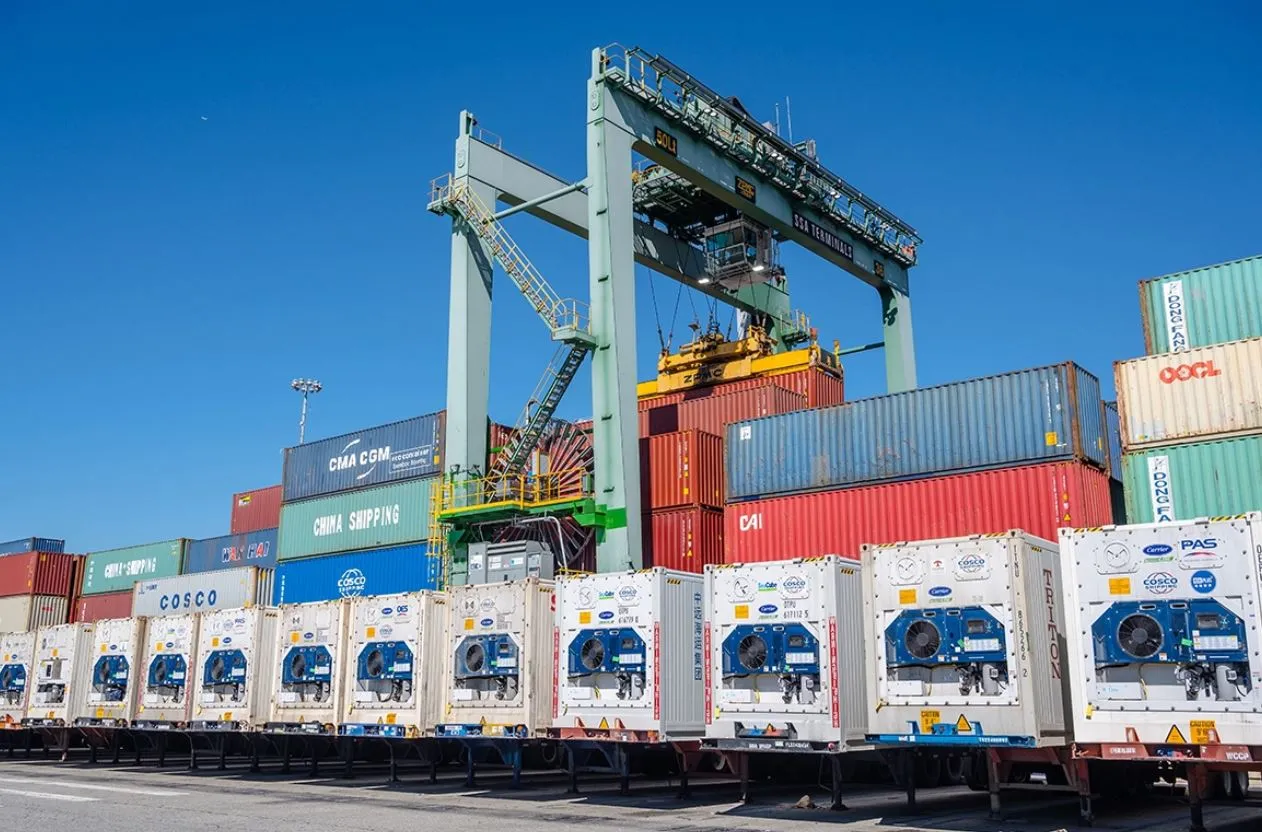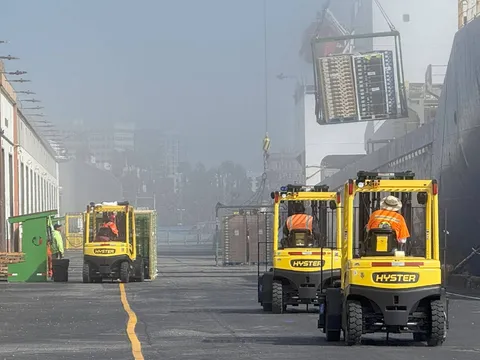
SSA Marine Reaches Zero-Emissions Milestone at Port of LA
SSA Marine, one of the world’s largest and most respected independent marine terminal operators, has announced the successful completion of a significant environmental milestone: the full conversion of its forklift fleet at Berth 55 at the Port of Los Angeles from propane-fueled to battery-electric powered vehicles. The milestone marks the first time one of SSA Marine’s terminals has achieved a complete transition to zero-emissions cargo-handling equipment, signaling a broader commitment to sustainability and innovation in the maritime logistics industry.
Berth 55, an international fruit terminal that has served as a critical point of entry for fresh produce from South America since the 1980s, is now operated exclusively with electric-powered forklifts. The project included the deployment of 44 battery-electric Hyster forklifts—specifically, 12 heavy-duty 10,000 lb. models and 32 lighter 3,000 lb. models—designed to handle a wide range of cargo-handling operations. This transition represents a major step forward in SSA Marine’s multi-year sustainability strategy aimed at reducing its carbon footprint and increasing energy efficiency at its terminal facilities worldwide.
Environmental and Operational Impact
The conversion to battery-electric forklifts is expected to significantly reduce greenhouse gas emissions and reliance on fossil fuels at Berth 55. According to SSA Marine, eliminating the use of propane-fueled forklifts at the terminal will reduce propane consumption by nearly 44,000 gallons annually. In terms of environmental impact, this translates to an estimated reduction of 264 metric tons of tailpipe carbon dioxide (CO2) emissions every year. These figures represent substantial progress toward the broader industry goal of decarbonizing port operations and achieving cleaner air in surrounding communities.
“Achieving this sustainability milestone at Berth 55 reinforces SSA Marine’s commitment to environmental responsibility, operational efficiency, and innovation—not just in breakbulk cargo handling, but across our terminal operations,” said Meghan Weinman, Vice President of Sustainability at SSA Marine. “We are proud to partner with the Port of Los Angeles on this ambitious project, and we’re confident that Berth 55 will serve as a blueprint for future zero-emissions initiatives across our portfolio.”
In addition to reducing emissions, battery-electric forklifts offer numerous operational advantages. These include quieter operation, lower maintenance costs, and improved workplace safety, all of which contribute to a more efficient and worker-friendly terminal environment.
A Collaborative Approach to Sustainable Port Operations

The Berth 55 project represents the culmination of a three-year collaborative effort involving SSA Marine, the Port of Los Angeles, equipment manufacturers, and infrastructure partners. The success of this initiative required not only a major investment in new battery-electric equipment but also the installation of supporting charging infrastructure to ensure seamless day-to-day operations. Charging stations were strategically placed to minimize disruption to terminal workflows and maximize uptime for the electric forklifts.
SSA Marine’s long-term presence and operational expertise at Berth 55 made it an ideal candidate for the pilot implementation of a fully electrified forklift fleet. The terminal specializes in handling perishable breakbulk cargo, particularly imported fruit, which requires rapid and careful handling. The ability to maintain high operational standards while transitioning to zero-emission equipment demonstrated that environmental progress does not have to come at the cost of performance or reliability.
“SSA Marine has been a longtime tenant at the Port of Los Angeles, and their role in facilitating the arrival of fruits from South America during our winter months is essential for consumers throughout Southern California and beyond,” said Michael DiBernardo, Deputy Executive Director of the Port of Los Angeles. “Our goal is to have zero-emissions yard equipment in place throughout the Port of Los Angeles by 2030. With this initiative, SSA Marine has not only embraced that vision but achieved it five years ahead of schedule, which is a remarkable accomplishment and one we deeply appreciate.”
Industry Implications and Future Goals
SSA Marine’s efforts at Berth 55 are part of a larger trend within the maritime and logistics sectors, as operators increasingly seek ways to align with environmental, social, and governance (ESG) goals. With regulatory pressure mounting and public awareness around climate change growing, port operators are investing in green technologies that reduce air pollution, mitigate climate impact, and support the health of surrounding communities.
In California, these trends are particularly relevant. The state has some of the most stringent air quality regulations in the country, and the ports of Los Angeles and Long Beach—two of the busiest container ports in the United States—are at the forefront of efforts to electrify cargo-handling operations. Projects like SSA Marine’s forklift transition at Berth 55 are aligned with the California Air Resources Board’s (CARB) long-term vision for zero-emission port equipment, which includes mandates for phasing out combustion-powered cargo-handling gear over the coming decades.
Looking forward, SSA Marine plans to build on the success of the Berth 55 initiative by expanding its use of battery-electric and hybrid equipment at other terminal locations, both domestically and internationally. The company is actively evaluating the feasibility of electrifying other cargo-handling equipment types—including yard tractors, top handlers, and container handlers—and is working with partners to assess infrastructure needs and funding opportunities.
“While Berth 55 marks a critical milestone in our sustainability journey, it is far from the endpoint,” said Weinman. “We view this as the beginning of a broader transformation across our global network. Each terminal will have its own roadmap, but Berth 55 proves that achieving zero-emissions cargo-handling is not only possible—it’s practical, scalable, and beneficial for everyone involved.”
SSA Marine’s successful conversion of its forklift fleet to battery-electric power at Berth 55 is a landmark achievement in the effort to green port operations. It demonstrates that meaningful emissions reductions can be achieved today using commercially available technology and strategic collaboration. As ports and terminal operators around the world look to decarbonize their operations, SSA Marine’s Berth 55 serves as a compelling case study in how to turn environmental ambition into operational reality.
By investing in clean energy solutions, partnering with forward-thinking port authorities, and maintaining a clear focus on sustainability, SSA Marine is not only enhancing the resilience and efficiency of its own operations but also helping to shape the future of sustainable maritime logistics.

